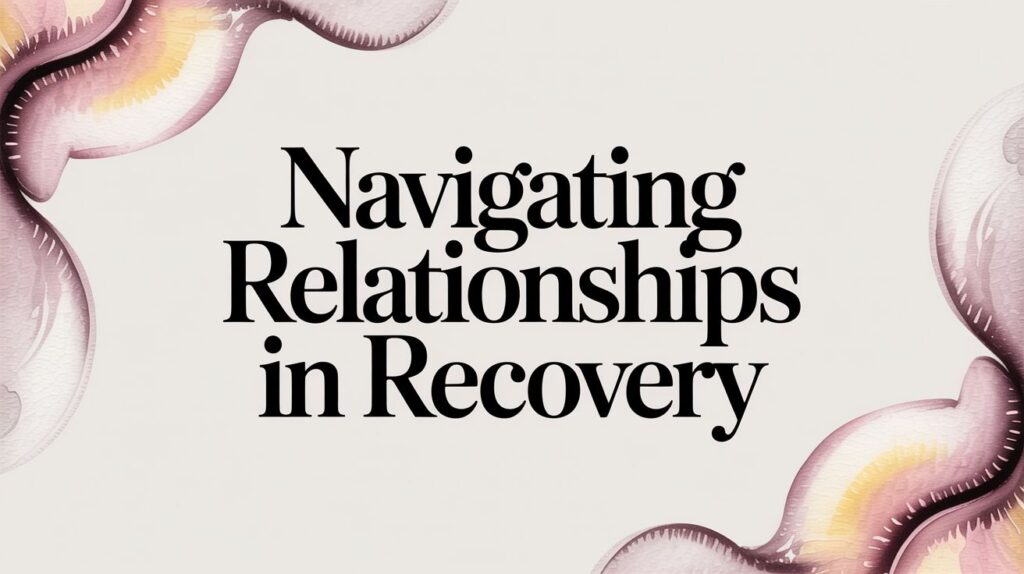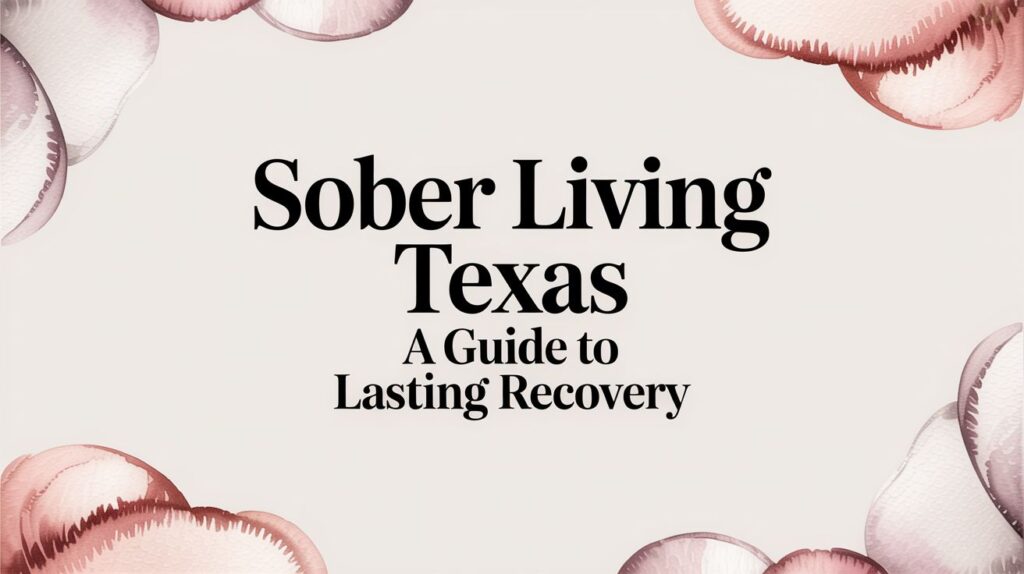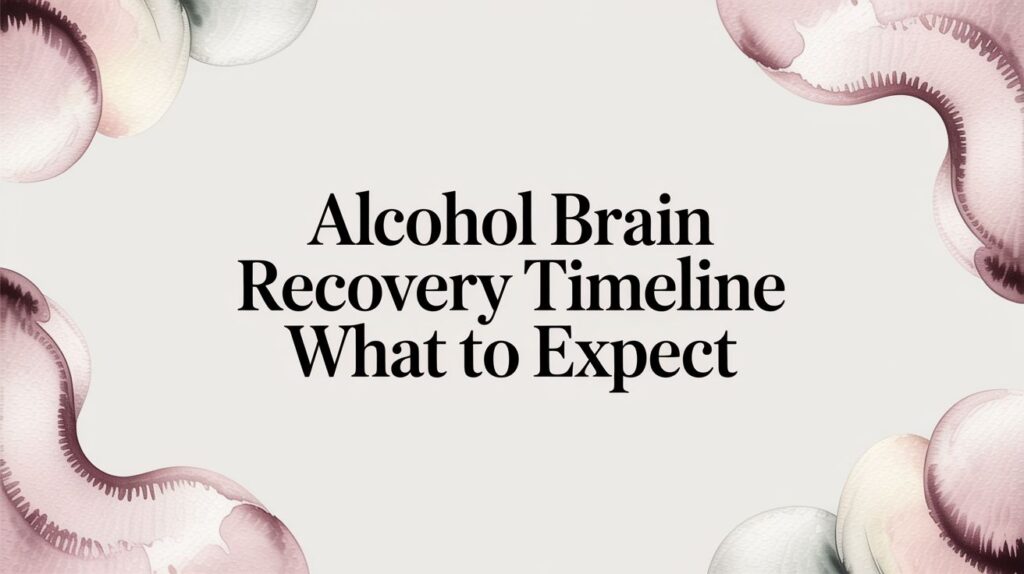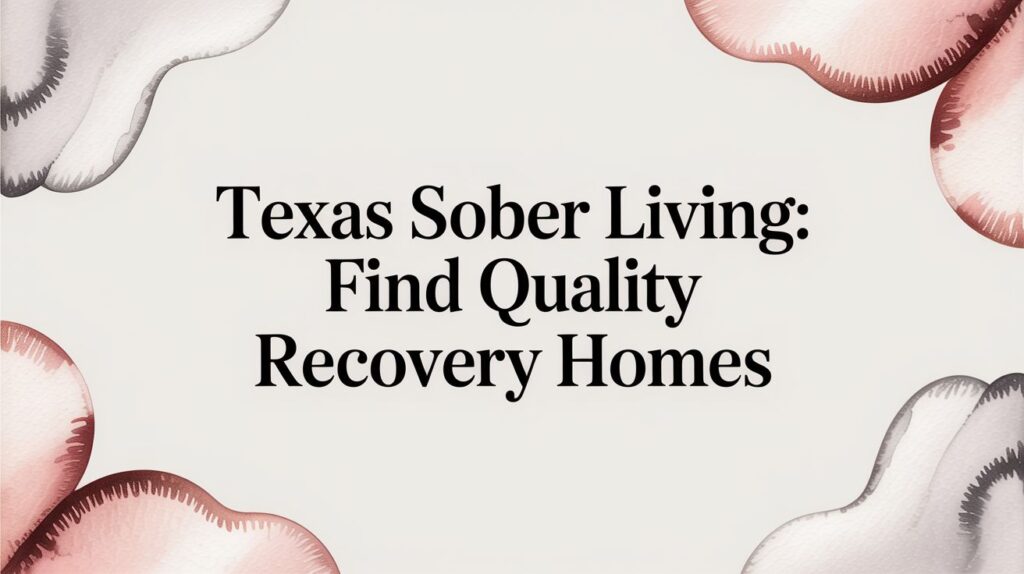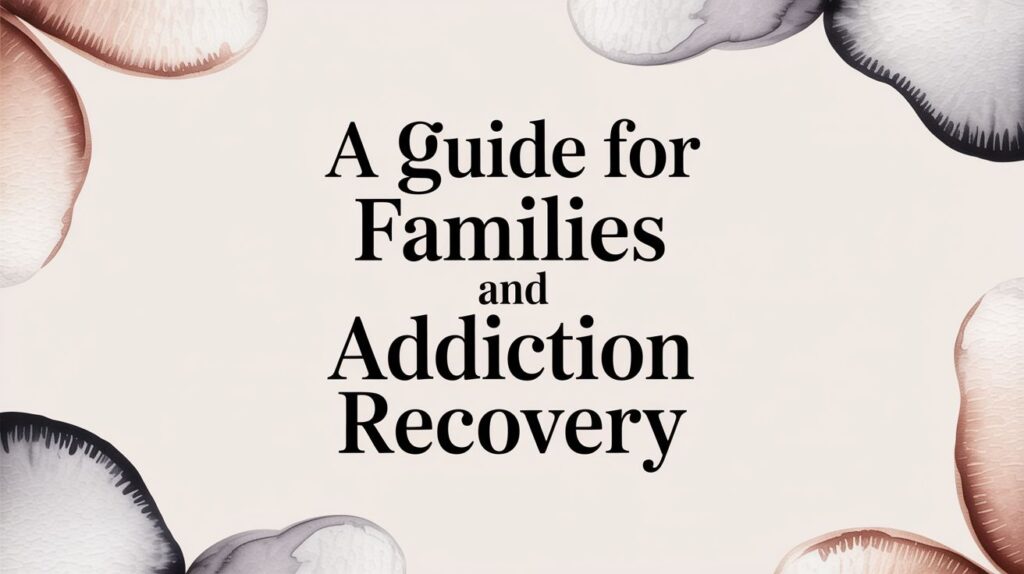Rehab is a step-by-step process designed to guide you from one stage of healing to the next. It starts with a personalized assessment, often moves into medically supported detox, and then transitions into intensive therapy. The journey wraps up by building a long-term aftercare plan to help you stay on track. It’s a progressive path, not a single event, focused on addressing the root causes of addiction.
Your First Step on the Road to Recovery
Starting the journey to recovery can feel like you're staring into a dense, unfamiliar fog. It’s filled with uncertainty and a ton of questions. Many people find themselves wondering, "how does rehab actually work?" That fear of the unknown is often the biggest barrier to asking for help.
But modern rehabilitation isn’t a mystery. It’s a well-defined process designed to provide clarity, structure, and support every step of the way.
Think of it like building a custom home. You wouldn't just start hammering nails without a blueprint. First, an architect—in this case, a clinician—sits down with you to understand your specific needs, lifestyle, and goals. They draft a detailed plan that is unique to you. This is the assessment and intake phase, where professionals get a 360-degree view of your physical health, mental well-being, and personal history.
The Foundation of Healing
Once the blueprint is set, you have to prepare the site. This phase is a lot like medical detoxification, or detox. For many, this is a critical first step to clear the ground and lay a stable foundation for what’s to come. Under medical supervision, your body is safely and comfortably cleared of substances, managing withdrawal symptoms so you can be physically and mentally ready for the next stage. It’s not about punishment; it’s about stabilization.
With a solid foundation in place, the real building begins. This is the heart of the rehab process—the treatment and therapy phase. Here, you work with skilled craftspeople (your therapists) who use proven tools and techniques to help you construct a new life. These evidence-based therapies, like Cognitive Behavioral Therapy (CBT) and group counseling, are the framework of your recovery.
This simple visualization shows the clear, progressive path that treatment follows.
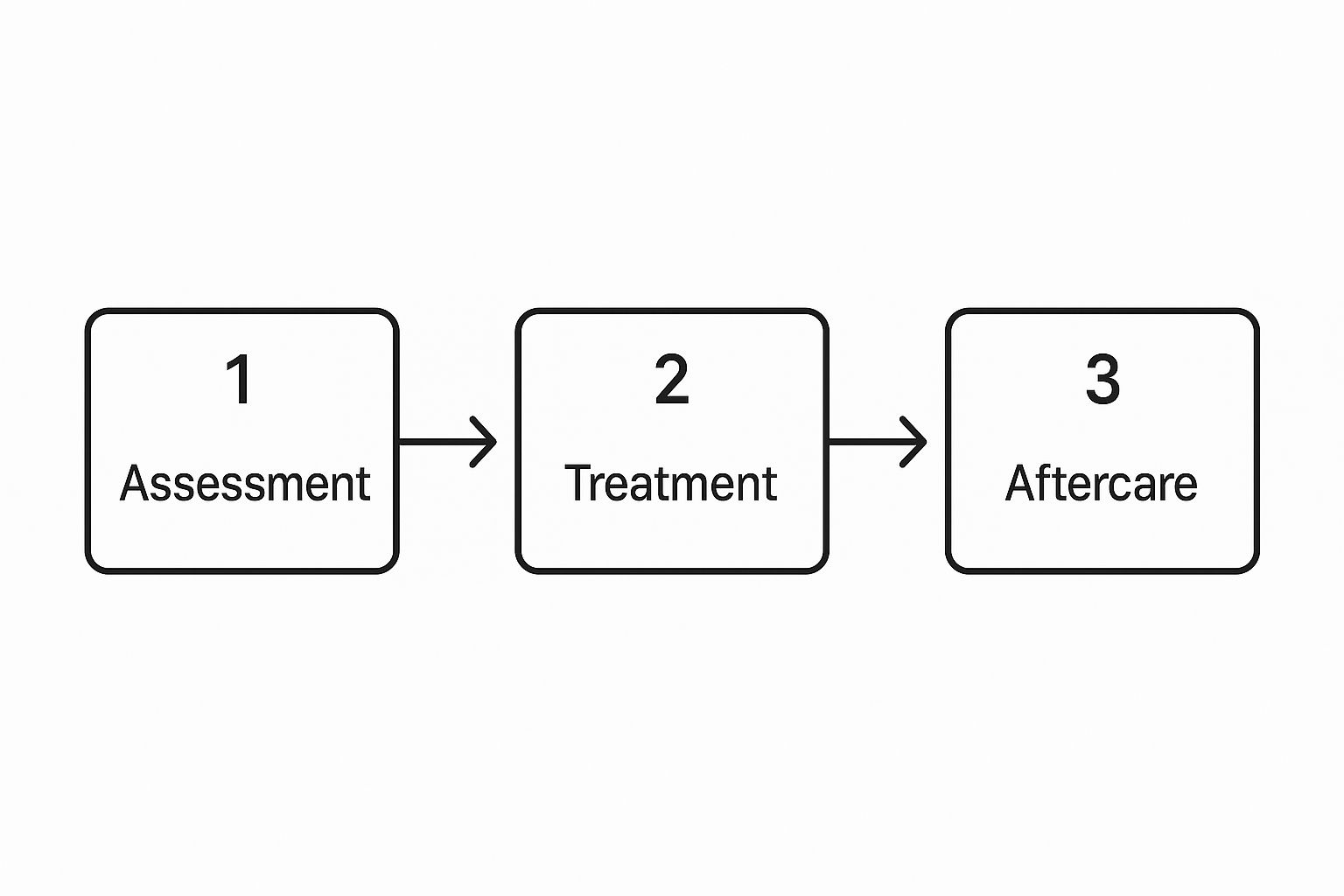
As you can see, each stage builds directly on the last one, creating a logical and supportive path toward lasting wellness.
Building a Life Meant to Last
Finally, no home is complete without the finishing touches and a solid maintenance plan. This is the aftercare and support phase. Graduating from a program isn’t the end of the road; it’s the beginning of putting everything you've learned into practice.
Aftercare is your personalized playbook for long-term success. It equips you with the strategies, support systems, and relapse prevention skills needed to navigate life's challenges without falling back into old patterns.
This final stage focuses on creating a sustainable plan that might include things like:
- Ongoing individual or group therapy sessions
- Getting involved in support groups like AA or NA
- Connecting with alumni programs
- Developing healthy ways to cope with real-world triggers
To give you a clearer picture, here’s a quick breakdown of how these pieces fit together.
The Core Stages of Rehabilitation at a Glance
| Stage | Primary Goal | Key Activities |
|---|---|---|
| Assessment & Intake | Create a personalized treatment plan. | Clinical interviews, medical history review, mental health screening. |
| Medical Detox | Safely manage withdrawal symptoms. | 24/7 medical monitoring, medication management, emotional support. |
| Treatment & Therapy | Address root causes of addiction. | Individual counseling (CBT/DBT), group therapy, family sessions. |
| Aftercare & Support | Build a sustainable recovery lifestyle. | Relapse prevention planning, support group integration, alumni events. |
This table neatly summarizes the journey, showing how each phase serves a distinct but connected purpose in building a strong foundation for recovery.
Understanding this structured, step-by-step process helps demystify how rehab works. It replaces the fear of the unknown with a clear map for the road ahead, showing that recovery isn’t some abstract concept but a deliberate, guided path toward healing and freedom.
Creating Your Personal Blueprint for Recovery

The road to recovery doesn't start with group therapy or a specific counseling technique. It begins with a conversation. The intake and assessment phase is the critical first step where a treatment team gets to know you—not as a case file, but as a whole person with a unique story, specific challenges, and hidden strengths.
This isn’t about just filling out forms. Think of it like meeting with an architect before building a house. They need to understand your lifestyle, your family's needs, and your vision before they can draw up a plan that actually works for you. In the same way, clinicians do a deep dive into your life to design a treatment program that fits.
A Comprehensive Look at Your Life
During your initial assessment, clinicians gather information across several key areas to build a complete picture. The goal is to understand every factor contributing to the substance use disorder so that your treatment plan is thorough and effective from day one. This entire process is confidential, judgment-free, and focused on one thing: your well-being.
The evaluation typically covers:
- Substance Use History: This explores what substances are being used, for how long, how often, and in what amounts.
- Medical and Physical Health: A review of your overall health, including any pre-existing conditions or chronic pain that might be tangled up with your substance use.
- Mental Health Status: An assessment for co-occurring disorders like depression, anxiety, or PTSD, which are incredibly common alongside addiction.
- Family and Social Environment: A look at your home life, support systems, and relationships to identify both stressors and sources of strength.
This 360-degree view is the cornerstone of effective treatment. It ensures that care isn't a one-size-fits-all solution but a carefully constructed plan addressing your specific biological, psychological, and social needs.
Building Your Personalized Treatment Plan
Once the assessment is complete, the clinical team uses this wealth of information to craft your individualized treatment plan. This document is a living roadmap, outlining the specific therapies, services, and goals for your time in rehab. And because recovery isn't a straight line, this plan is designed to be flexible and can be adjusted as you progress.
This detailed, person-first approach reflects a major shift in addiction care. The global market for addiction rehab facilities was valued at approximately $15.6 billion in 2022 and is projected to hit $20.93 billion by 2025. This growth signals a rising demand for high-quality, personalized recovery services that truly address the complexities of addiction. You can learn more about the growth of the addiction rehab market and its future outlook here.
Your personal plan might specify certain types of therapy, like Cognitive Behavioral Therapy (CBT) to challenge negative thought patterns or Eye Movement Desensitization and Reprocessing (EMDR) to heal from trauma. It will also outline the right level of care for you—whether that’s a Partial Hospitalization Program (PHP) or an Intensive Outpatient Program (IOP)—based on your clinical needs and life commitments.
By starting with a detailed and compassionate assessment, the entire rehab process is set up for success, ensuring your path forward is clear, supportive, and perfectly aligned with your recovery goals.
Building a Stable Foundation Through Detox
Before you can build a new life, you have to clear the old, unstable ground and pour a solid foundation. In addiction recovery, this critical prep work is called medical detoxification. It’s often the first hands-on step, designed to get substances out of your body in a safe, controlled, and medically supervised environment.
The very idea of detox can be intimidating, bringing up images of suffering and pain. The reality of a professional, medically managed detox is the exact opposite. It’s not a punishment or some test of willpower; it's a short-term, supportive process focused entirely on your safety and stability. The main goal here is to manage withdrawal symptoms, making the whole experience as comfortable as possible so your body can actually start to heal.
Why Medical Supervision Is Crucial
Trying to detox on your own—going "cold turkey"—isn't just incredibly hard. It can be flat-out dangerous. Withdrawal from certain substances, especially alcohol or benzodiazepines, can trigger severe medical complications like seizures or delirium tremens. This is precisely why professional oversight is non-negotiable.
A medical detox program gives you:
- 24/7 Medical Monitoring: A team of doctors and nurses is always there, keeping an eye on your vital signs and ready to respond immediately to any physical or psychological distress.
- Medication Management: Clinicians can use approved medications to ease withdrawal symptoms, knock down cravings, and head off any dangerous complications. This makes the process significantly safer and more bearable.
- A Safe and Supportive Environment: Being in a dedicated facility gets you away from triggers and the temptation to use. It’s a calm space focused solely on getting you stable.
This structured support system turns a potentially risky process into a manageable first step. It’s all about creating a physically and emotionally stable base you can launch from into the deeper work of recovery.
Setting the Stage for Real Healing
It’s really important to understand that detox isn't recovery itself. Think of it like a surgeon cleaning and prepping a wound before they can start stitching it closed. Detox deals with the immediate physical crisis, but it doesn’t touch the underlying thoughts, behaviors, and emotional pain that drive addiction.
Detox is the essential prologue to the story of recovery. It stabilizes your body and clears your mind, allowing you to be fully present and capable of engaging in the life-changing therapeutic work that comes next.
Once the withdrawal symptoms are managed and your body is no longer in crisis mode, your mind gets clearer and more receptive. You can think more rationally, feel emotions without being completely overwhelmed, and actively participate in therapy. Trying to do deep psychological work without this foundational stability would be like trying to have a meaningful conversation in the middle of a hurricane.
By completing a medically supervised detox, you aren't just getting through a tough phase; you are intentionally building the solid ground on which a lasting recovery can be constructed. It’s the first essential investment in your health, making sure you’re strong enough for the journey ahead.
The Real Work of Healing: Evidence-Based Therapies

Once the physical fog of withdrawal starts to lift, the real construction work begins. This is the heart of outpatient rehab, where you move beyond just not using and start building a life where you don’t need to. The work is powered by evidence-based therapies—proven, research-backed methods that are the gold standard in modern addiction treatment.
Think of these therapies as specialized tools in a skilled craftsman's toolbox. Each one is designed for a specific job, whether it’s rewiring a faulty thought pattern, strengthening your ability to handle stress, or sanding down the rough edges of past trauma. Your therapist selects the right tools to help you rebuild your life from the inside out.
Rewiring Your Thoughts with Cognitive Behavioral Therapy
One of the most powerful and widely used tools is Cognitive Behavioral Therapy (CBT). At its core, CBT operates on a simple but life-changing principle: your thoughts, feelings, and actions are all linked. A negative thought can trigger a painful feeling, which then drives a destructive behavior, like picking up a drink or a drug.
CBT essentially helps you become a detective of your own mind. You learn to spot the automatic, unhelpful thoughts that keep the cycle of addiction spinning. For instance, a thought like, "I'll never get this right, so what's the point?" can spiral into hopelessness, which for many is a powerful trigger to use.
Working with your therapist, you’ll learn to challenge and reframe these thoughts. Instead of treating them as facts, you’ll practice replacing them with more balanced and realistic ones, such as, "This is hard, but I'm learning new skills and I can handle this one step at a time." It's a small shift that breaks the chain reaction, giving you back control.
Building Emotional Strength with Dialectical Behavior Therapy
Another key approach, especially if you struggle with intense, overwhelming emotions, is Dialectical Behavior Therapy (DBT). Originally developed to treat borderline personality disorder, its skills have proven incredibly effective for addiction recovery. DBT gives you practical, in-the-moment tools for managing emotional pain without turning to substances.
DBT is built on four core skill sets:
- Mindfulness: Learning to stay present and observe your thoughts and feelings without judgment.
- Distress Tolerance: Building the capacity to survive a crisis without making things worse.
- Emotion Regulation: Understanding your emotions and learning how to dial down their intensity.
- Interpersonal Effectiveness: Learning to ask for what you need and set boundaries in a healthy way.
Think of these skills as an emotional first-aid kit. When you feel overwhelmed, instead of reaching for a substance, you can reach for a DBT skill to get you through the storm.
While evidence-based therapies are highly effective, a significant treatment gap remains. In the United States, only about 23.6% of people who need substance use treatment actually receive it. This highlights the importance of accessible and engaging care for those ready to start their healing journey. Discover more insights about addiction treatment statistics from TherapyRoute.
Therapies are not one-size-fits-all. A good rehab program will draw from several evidence-based models to create a plan that fits your specific history, substance of choice, and co-occurring mental health needs.
Comparing Common Therapeutic Approaches in Rehab
| Therapy Type | Core Focus | Best For Addressing |
|---|---|---|
| Cognitive Behavioral Therapy (CBT) | Identifying and changing negative thought patterns that lead to substance use. | Automatic negative thoughts, relapse triggers, and building practical coping skills. |
| Dialectical Behavior Therapy (DBT) | Building skills for emotion regulation, distress tolerance, and interpersonal effectiveness. | Intense mood swings, self-harming behaviors, trauma, and emotional triggers for use. |
| Motivational Interviewing (MI) | Resolving ambivalence and strengthening a person's own motivation for change. | Individuals who are hesitant or uncertain about quitting, helping them find their "why." |
| Contingency Management (CM) | Providing tangible rewards for positive behaviors like negative drug screens. | Reinforcing abstinence, especially for stimulant and cannabis use disorders. |
Understanding these different approaches helps you see how a comprehensive treatment plan comes together, targeting not just the substance use itself but the underlying issues that drive it.
The Power of Individual and Group Settings
This therapeutic work happens in two main formats, each with its own unique benefits.
Individual therapy is your private workshop. It’s a confidential, one-on-one space where you can do a deep dive into your personal history, trauma, and specific challenges with a dedicated therapist. This focused setting allows for a highly personalized approach to your healing.
Group therapy, on the other hand, is the community workbench. This is where you connect with peers who truly get what you’re going through. It shatters the sense of isolation that so often comes with addiction. Sharing your story and hearing from others proves you are not alone in this fight, creating a powerful support network that is vital for long-term recovery.
Healing the Whole Person: Holistic and Step-Down Care
Getting sober is just the first step. True, lasting recovery is about building a life you don't feel the need to escape from. This is where modern outpatient rehab shines, looking past the symptoms to heal the entire person—mind, body, and spirit.
This philosophy, often called holistic care, is built on a simple truth: every part of your health is connected. Substance use doesn't just hijack your brain chemistry; it wears down your body, frays your emotions, and can leave you feeling completely disconnected from yourself. Holistic practices are woven into treatment to repair that damage from the inside out. They aren't fluffy extras; they're essential tools for rebuilding a solid foundation.
Nurturing Mind, Body, and Spirit
Holistic therapies give you practical, hands-on ways to manage the stress and anxiety that often drive substance use. They help you get back in tune with your body and find a sense of inner calm, equipping you with real-world skills for navigating the rocky terrain of early recovery.
You’ll likely encounter practices like:
- Mindfulness and Meditation: These aren't about emptying your mind. They teach you to notice your thoughts and feelings without getting swept away by them. That tiny pause between a trigger and your reaction is where freedom begins.
- Yoga and Movement Therapy: Gentle, mindful movement helps release the physical tension and trauma stored in the body. It’s a powerful way to reduce anxiety and start rebuilding a positive, trusting relationship with yourself.
- Nutritional Counseling: Learning how to properly fuel your body is a game-changer. Good nutrition can stabilize your mood, repair physical damage, and give you the energy needed to do the hard work of therapy.
By creating physical and emotional stability, these practices make it much easier to dig into the core psychological work with therapies like CBT and DBT.
Lasting recovery involves more than just managing cravings. It’s about building a life that feels so good you no longer need to escape from it. Holistic care provides the tools to build that life.
The Step-Down Model of Care
Just as important as what you learn is how you learn it. Modern rehab is structured around a step-down model—a gradual, supportive process that helps you safely transition from intensive treatment back to your everyday life.
Think of it like learning to ride a bike. You don't just jump on and hope for the best. You start with training wheels for maximum support. Once you've got your balance, the training wheels come off, but a parent is still running alongside, ready to catch you. Eventually, you’re pedaling confidently on your own.
The step-down approach in rehab mirrors this process perfectly. You might begin in a highly structured Partial Hospitalization Program (PHP), attending treatment for several hours a day, five days a week. This gives you the immersive support you need when you're most vulnerable.
As you gain confidence and meet your treatment goals, you “step down” to an Intensive Outpatient Program (IOP), which requires fewer hours each week. This creates space for you to return to work, school, or family responsibilities while still having a strong clinical safety net.
This gradual decrease in structure builds real-world resilience and self-trust. It ensures you’re never thrown into the deep end without support, which dramatically reduces the risk of relapse. Technology has made this continuing support even more accessible. For instance, by 2023, about one in three mental health treatments in England were delivered online via teletherapy. This move toward virtual care means that staying connected to your support system is easier than ever. You can learn more about these kinds of innovations in addiction rehabilitation from Rehabs UK.
By combining holistic healing for the whole person with a smart, structured step-down process, rehab gives you a clear and supportive path toward lasting, independent recovery.
Designing Your Life After Rehab

Graduating from an outpatient program isn't crossing the finish line—it's stepping up to the starting line of a new life. The skills and awareness you gain in therapy are your foundation, but the real test begins when you start applying them to the messy, unpredictable challenges of daily living.
This is exactly why a strong aftercare and relapse prevention plan is one of the most vital parts of the entire process.
Think of it as your personalized playbook for staying on track. While you were in treatment, you had a built-in structure and a team of supporters around you. Aftercare is the strategy that keeps that support system alive and kicking as you learn to navigate triggers, stressors, and risky situations on your own terms. It’s a proactive game plan, not a reactive safety net.
Building Your Support Network
One of the biggest myths about recovery is that it’s a solo mission after treatment ends. The truth is, lasting sobriety is almost always rooted in community and connection. A solid aftercare plan is designed to help you build and maintain this network so you never feel like you're going it alone.
Key pieces of a continuing care plan usually include:
- Ongoing Therapy: Continuing with individual or group therapy, maybe weekly or bi-weekly, gives you a consistent space to process challenges and sharpen your coping skills.
- Support Groups: Getting active in mutual-help groups like Alcoholics Anonymous (AA), Narcotics Anonymous (NA), or SMART Recovery provides priceless peer support and a dose of healthy accountability.
- Alumni Programs: Staying connected to your treatment center and the people you went through it with creates a powerful sense of belonging and shared experience.
This ongoing support is what helps you turn the theory of recovery into the practical reality of living a sober, meaningful life. It’s about having people to call when things get tough and a community to celebrate your wins with, big or small.
Aftercare isn't just about preventing relapse; it's about building resilience. It equips you with the tools and community needed to not just stay sober, but to thrive in every area of your life.
Mastering Real-World Scenarios
Ultimately, the goal of aftercare is to empower you to handle life's curveballs with confidence, without falling back on old habits. Your relapse prevention plan will help you pinpoint your personal triggers—the specific people, places, and feelings that spark cravings—and map out concrete strategies for dealing with them.
For instance, your plan might involve creating new weekend routines that don't revolve around substance use. It could mean practicing mindfulness to manage work stress or having a pre-planned exit strategy for holiday parties. You'll learn to spot the early warning signs of a potential slip and take decisive action to get yourself back on solid ground.
This is where the real work of recovery takes root. By designing a detailed life plan after rehab, you're no longer just reacting to what life throws at you. You are actively creating a future built on strength, self-awareness, and a powerful support system.
Common Questions About the Rehab Process
Stepping into recovery brings up a wave of practical questions that can feel just as big as the emotional ones. Knowing what to expect ahead of time can clear the path, making it that much easier to take the first step. Here, we tackle a few of the most common concerns we hear from clients and their families.
How Long Does Rehab Usually Take?
This is probably the biggest question on everyone's mind, but there’s no single, one-size-fits-all answer. The length of your treatment is built around your specific needs—the goal is to be effective, not just fast.
A typical stay can range anywhere from 30 to 90 days or even longer. A shorter, 30-day program might be a great fit for someone with a less severe addiction who has a solid support system waiting at home. Longer programs, like those lasting 60 or 90 days, give you the time needed to dig into more complex issues like past trauma or a co-occurring mental health condition. The whole point is to give you enough runway to build a rock-solid foundation for recovery.
Can I Still Work During Treatment?
The thought of putting your entire life on pause is a huge hurdle for many people. This is exactly where outpatient rehab shines, offering incredible flexibility that residential programs just can't match. Options like a Partial Hospitalization Program (PHP) or an Intensive Outpatient Program (IOP) are designed to fit around your existing commitments.
You can attend therapy and group sessions during the day or in the evenings, all while still living at home, going to work, or caring for your family. This structure has a powerful side effect: you get to immediately practice the new coping skills you’re learning in real-world situations, which makes the transition back into your daily routine feel much more natural.
The core difference between inpatient and outpatient rehab comes down to environment and intensity. Inpatient offers immersive, 24/7 care in a protected setting, while outpatient provides structured, expert care that plugs directly into your daily life.
Figuring out which one is right for you depends on your clinical needs, your personal responsibilities, and the level of support you require. A good initial assessment will help clarify which path gives you the best shot at lasting success.
At Altura Recovery, we get it—recovery needs to work with your life, not against it. Our flexible outpatient programs in Houston provide evidence-based care that fits your schedule, so you never have to choose between getting help and meeting your responsibilities. Discover what real healing and freedom feel like by exploring our personalized treatment options at https://www.alturarecovery.com.
Article created using Outrank


